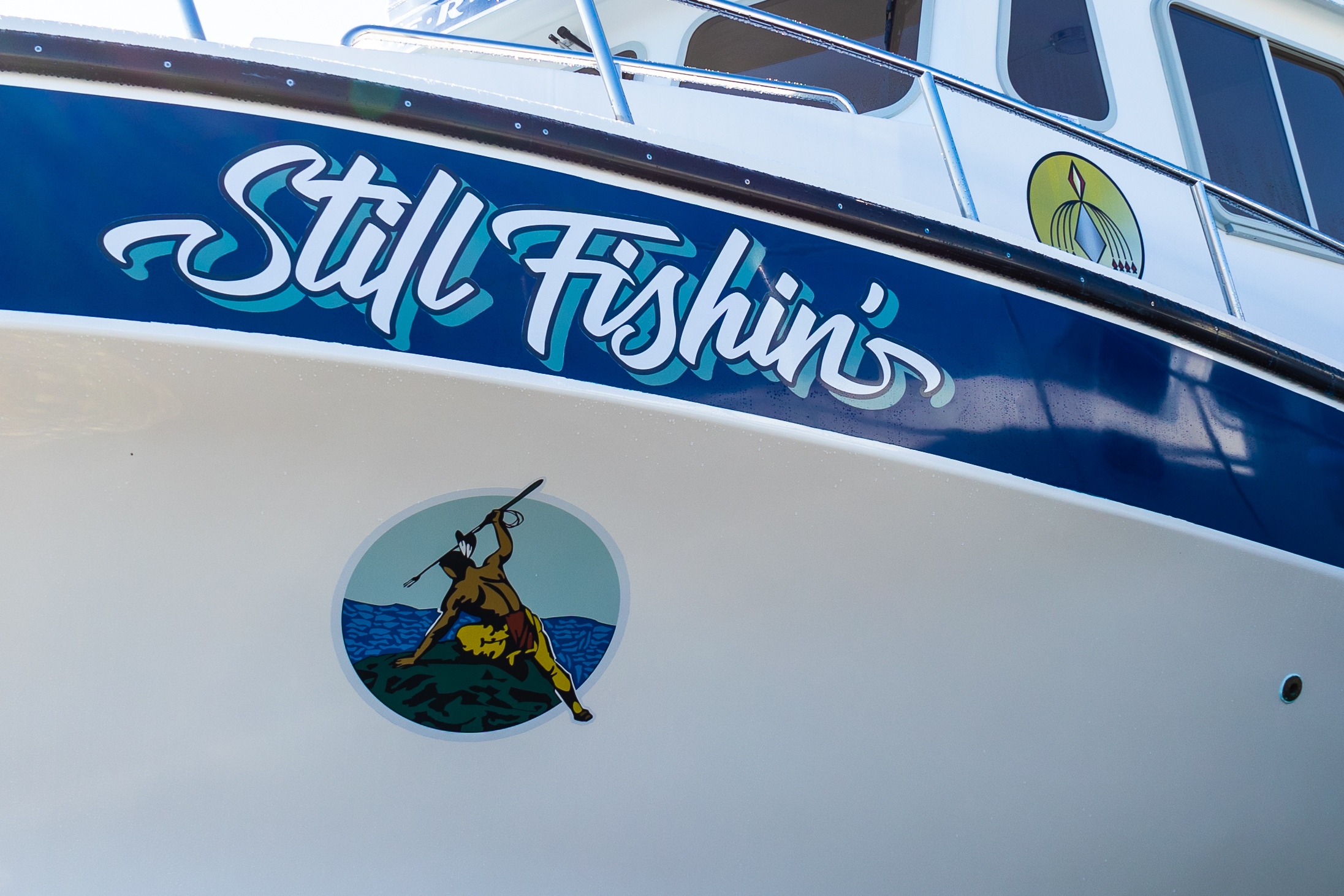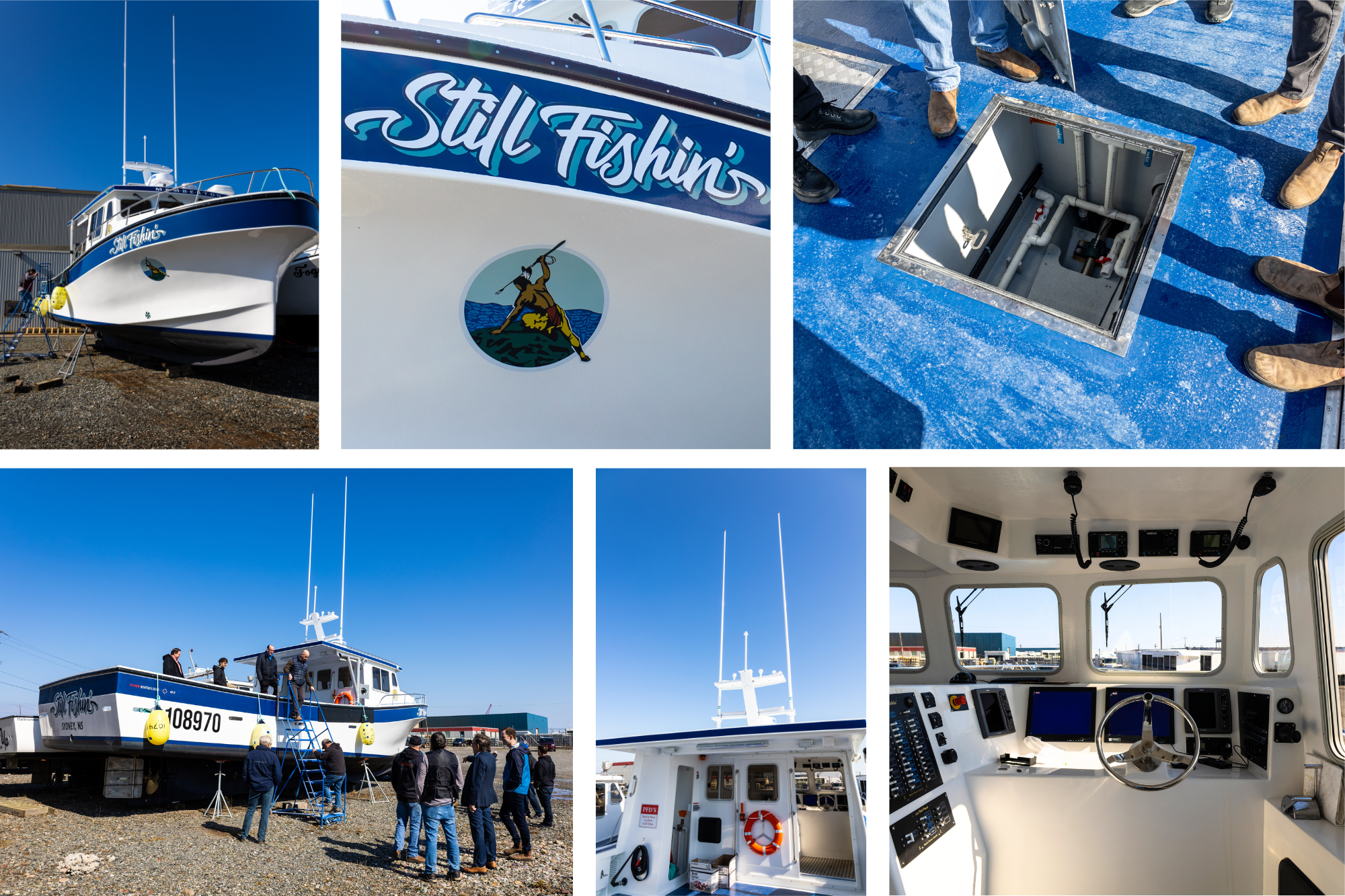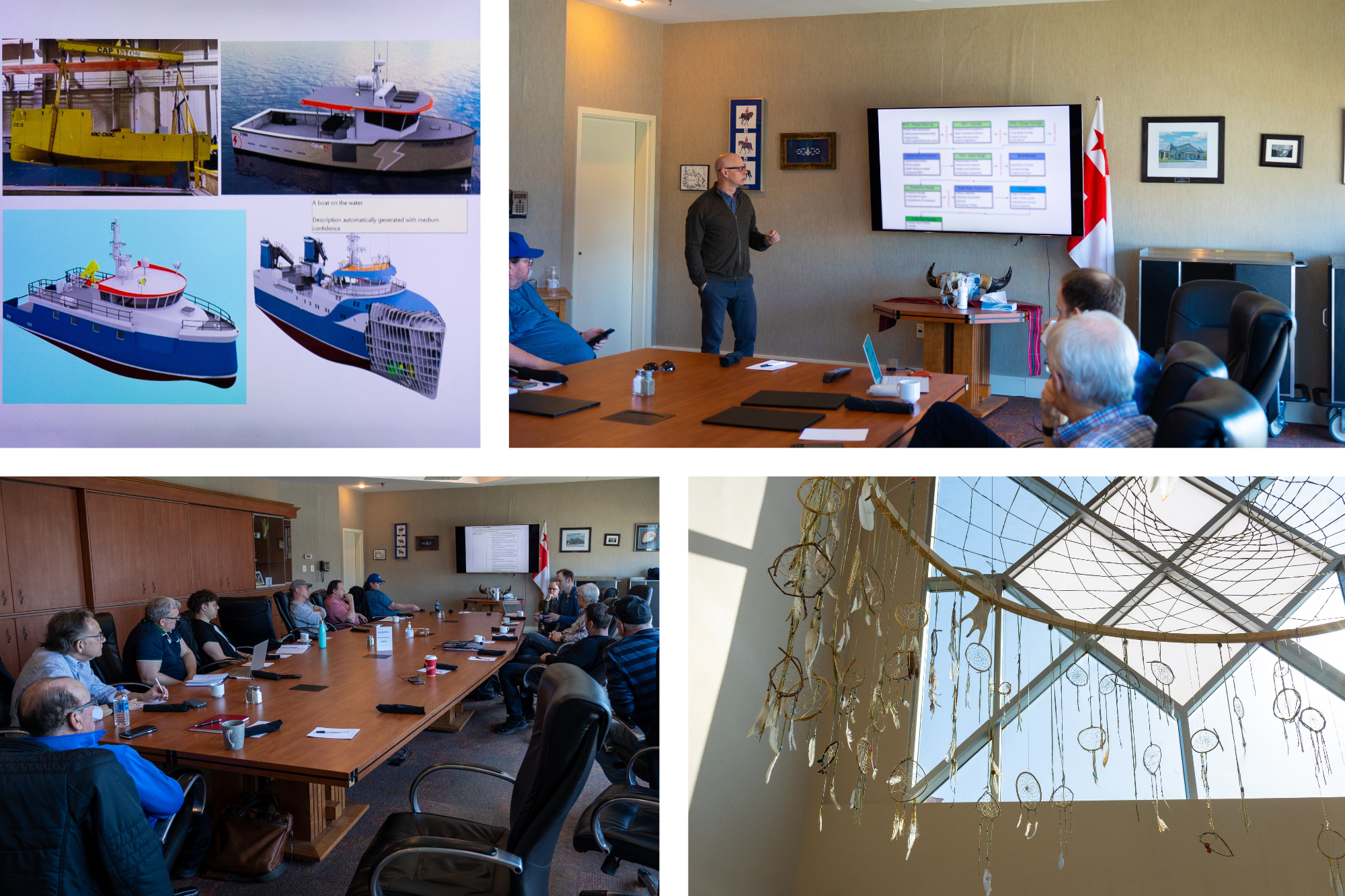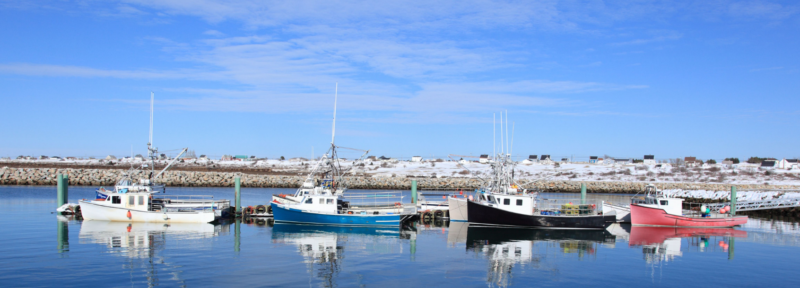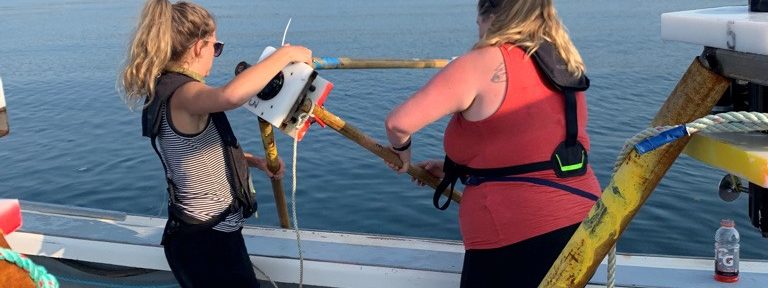Building the First Electric Lobster Vessel and Shoreside Charger
ᐃᓕᓴᕆᔭᐅᔪᖅ: Heather Grant
As we arrived in Membertou one mid-April evening, we were greeted by the heavy Nova Scotia spring rain. The sky was so closed-in that the lauded views of Cape Breton’s Bras d’Or coastline were nonexistent, reduced to just a few metres in any direction.
We awoke the next morning to somewhat hazy sights, but by mid-morning—just in time for us to see Membertou First Nation’s boatbuilding facilities and its new lobster fishing boat—the skies opened to a sunny day. The shift felt like a quiet message of support: the future of maritime boatbuilding is becoming much clearer, and it is easy to picture in Membertou.
Nova Scotia’s lobster fishery employs thousands of people across the province. Valued at over $1 billion in 2021, the industry makes up nearly half the haul value landed nation-wide. The cultural and economic importance of the fishery cannot be understated, but it is also responsible for an estimated 82 million kilograms of CO2 emissions annually—the equivalent of about 20,000 cars. Nova Scotia is also home to a significant boatbuilding industry, valued at more than $100 million.
Creating zero-emission solutions for marine workboats, a category that includes Atlantic Canada’s iconic lobster fishing boats, is a key part of broader global efforts to decarbonize marine industries and fight climate change. The inshore fishery makes up the majority of lobster landings, licenses and vessels in Nova Scotia, and it presents an ideal opportunity to advance zero-emission propulsion systems. Seventy per cent of the inshore fleet travels within 20 kilometres of the shore, meaning the bulk of theses vessels can viably be powered by battery electric systems.
This past December, Oceans North and Membertou First Nation signed a memorandum of understanding to develop the first generation of zero-emission fishing vessels in Canada. As part of these efforts, Membertou First Nation recently hosted a meeting with Oceans North and other project partners, including Allswater Marine and Rimot, to continue discussing next steps ahead of the full project launch.
Membertou First Nation gave us a full tour of their boatyard facilities during the meeting. They’ve spent years developing and expanding the grounds to enable a variety of new shipbuilding opportunities.
Left: Two of Membertou First Nation’s lobster fishing vessels stored onshore during the off-season. Right: A lobster trap storage area at Membertou's boatyard.
ᐃᓕᓴᕆᔭᐅᔪᖅ: Heather Grant
As part of the tour, we were able to see the new top-of-the-line lobster fishing vessel—Still Fishin’—which they launched in April 2023. This boat, built by the Membertou team, is ready just in time for the upcoming 2023 lobster fishing season, and will be operated as part of the Membertou Fisheries fleet.
Membertou First Nation’s brand new lobster fishing vessel, Still Fishin’, was built by Membertou at their boatyard.
ᐃᓕᓴᕆᔭᐅᔪᖅ: Heather Grant
The Membertou boatbuilding team guided us into the workshop, where the next vessel is coming together quickly after all the experience gained from the Still Fishin’ build. Membertou’s boatbuilding knowledge has set the stage for a future constructing electric lobster fishing vessels—the natural next step in their evolution.
Membertou First Nation’s boatbuilding workshop, with a look at the in-progress build of their next lobster fishing vessel.
ᐃᓕᓴᕆᔭᐅᔪᖅ: Heather Grant
After the tour, Membertou First Nation Chief Terry Paul welcomed everyone for a discussion on how all project partners can support Membertou as a leader in the boatbuilding industry within Nova Scotia and beyond.
Presentations at Membertou First Nation’s facilities from project partners on the next steps for building the first electric lobster vessel.
ᐃᓕᓴᕆᔭᐅᔪᖅ: Heather Grant
Thank you to Membertou First Nation for being such wonderful hosts. We look forward to continuing this work with our project partners on the path to building the first electric lobster fishing vessel and shoreside charger. Keep an eye out for additional announcements on this work soon!
Curtis Martin is Oceans North’s climate and oceans campaigner.

